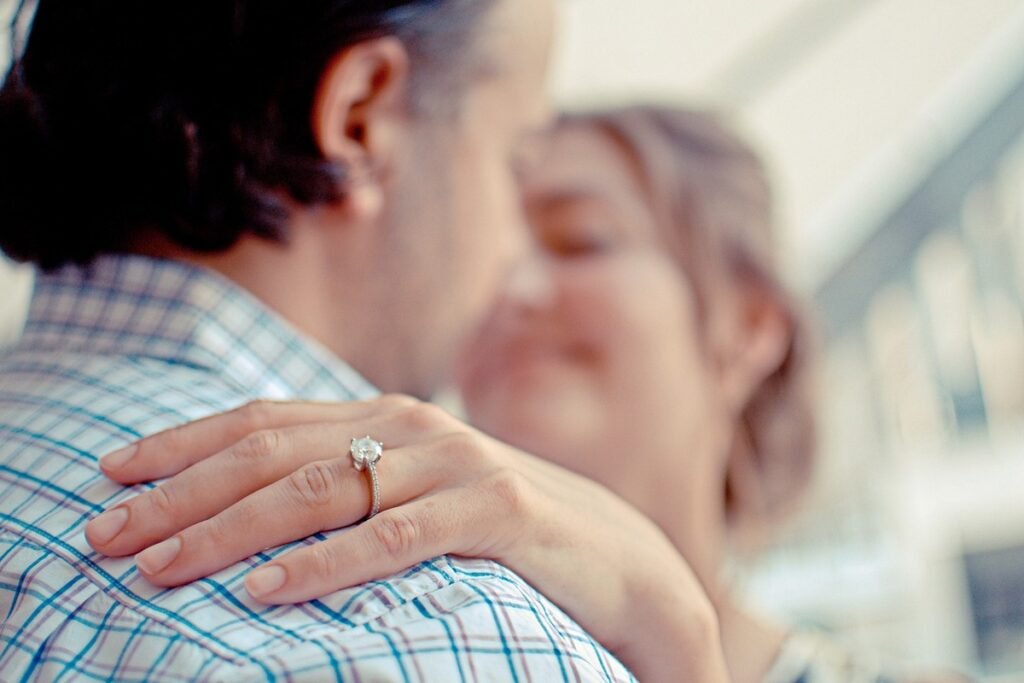When you are ready to pop the question, it’s a common tradition to do so with an engagement ring. It doesn’t have to be the most expensive–but it certainly helps if you make your bride-to-be go “Wow!” because of a few simple right decisions when choosing the ring. This is why it’s important to ask the question, “Which metal is best for engagement ring?”
For starters, an easily neglected approach is how to choose metal for engagement ring. Most people would immediately focus their attention on the diamond or precious stone. Before you make this common mistake, keep in mind that even a small diamond can look bigger and brighter with the right metal and setting.
How to Choose the Best Metal For Your Engagement Ring
Choosing the best metal for your engagement ring is both an art and science in itself. Failing to choose the right metal for your piece could lead to complications down the road. Bad metal choice can result in wearability, durability, and even health issues. Now, if you’re planning or in the market for an engagement ring, you’ve come to the right place. This guide will help you pick out the best metal for you in terms of pricing, beauty, and robustness.
Five Metals to Choose From
When asking which metal is best for engagement ring, there are a few factors to consider. On the surface, your partner’s preference will definitely factor in. They may own rings of a certain type, which suggests that they may have been tried and tested to their tastes.
Still, it pays to know the different pros and cons of the various metals used for engagement rings. This shows that you have put a lot of thought into the decision and did not just buy the ring on the fly.
Gold
Most buyers tend to ask, “Should an engagement ring be silver or gold?” These may be the classic color options, but keep in mind that these metals carry certain pros and cons.
Gold may be the most dynamic of metals. It carries the long tradition of engagement rings because many ready-made engagement rings are set with this metal.
Many first-time buyers equate the term 24-karat gold to mean the purest and highest quality. While this is true in terms of the actual price tag of the ring, you need to also note the value of wearability.
24K is pure gold, which is very soft and malleable, and thus, not wearable. It also has the disadvantage of having a saturated color, which does not look attractive in jewelry. Paler gold comes in 18K or 14K. While they may have a lower karat count, they are sturdy for jewelry. You can also expect a less intense gold color, giving it a daintier appeal.
Rose gold
This metal may be an off-shoot of gold, but it gives a totally different appeal to the engagement ring. Its combination of gold and alloy gives it a pinkish tone, that plays between copper and bronze, depending on the mix of metals.
Due in part to the name and the popularity of the metal, it has been associated with innocent romance. A lot of younger ladies are also opting for this, especially when paired with a rose gold stone.
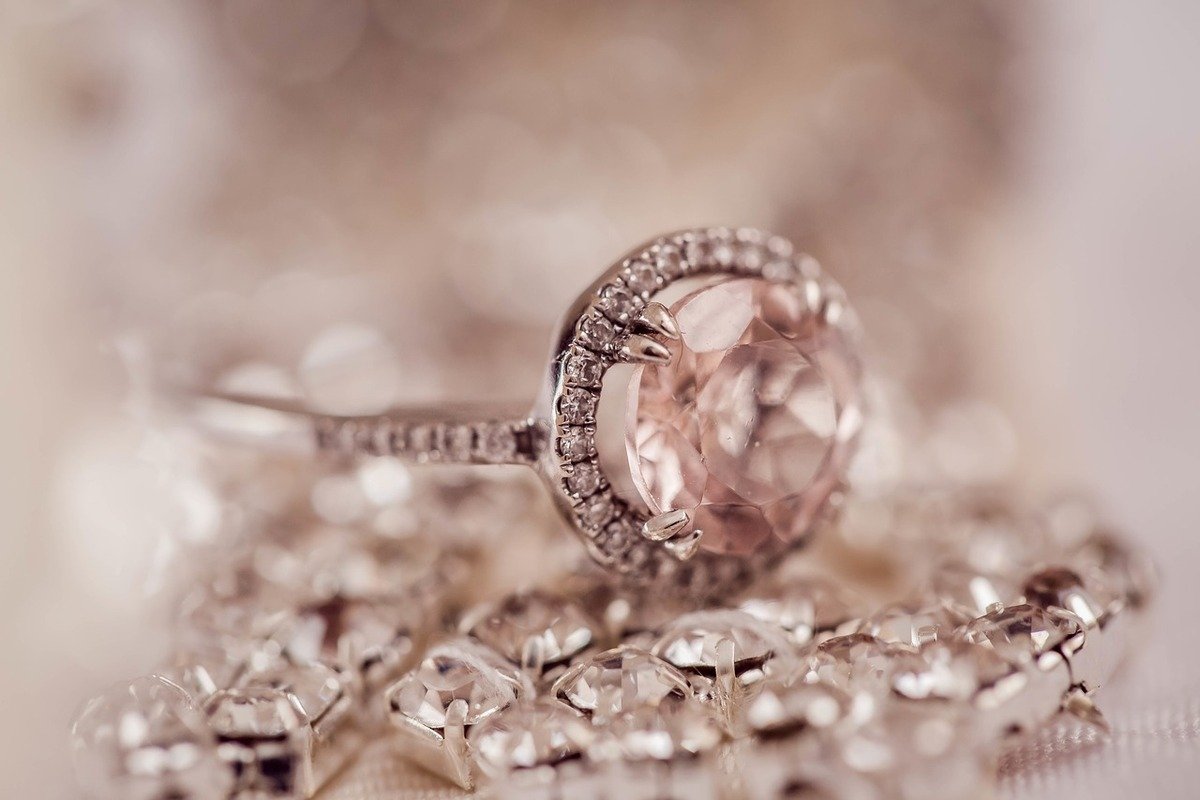
Its dainty appearance may be misleading. Compared to yellow gold, rose gold is more durable. Their scratches may be polished off, which makes them perfect for everyday wear. Just note that not all skin tones will match rose gold, so be sure that it will complement your partner’s skin tone and preference.
White gold
Another variant of yellow gold is white gold. If you want to stick with the classic gold choice but prefer a more modern feel, this is the second nicest choice. White gold remains closer to silver in appearance, but it can be plated with harder metals like rhodium.
This may be more expensive at the onset, but it will make the ring less prone to scratches and tarnishing. This will save your partner a whole world of polishing and fixing. Make sure that you still keep a fairly regular re-plating after a good number of years.
Platinum
Modern jewelry has always been associated with the icy shimmer of metals like white gold and platinum. Compared to the former, the latter has the quality of being a rarer metal for jewels.
Of all the typical metals used for engagement rings, platinum is often the best choice for those who are looking for a truly durable ring. Buyers whose partners also require hypoallergenic jewelry will benefit from platinum.
Another advantage that platinum has over white gold and silver is it does not tarnish. It will usually not require any re-plating even after years of wear. Additionally, because platinum is a naturally white metal, it will set of diamonds even brighter compared to gold.
Silver
Many people ask “Is silver OK for an engagement ring?” Silver may be the least pricey of all metals, so one can shave off the ring’s price tag on the metal alone. But for some, silver then carries the reputation of being a cheap option–especially for an engagement ring.
It’s important to note that there are different kinds of silver. Sterling silver may be the most common variant. It shares a similar hue to white gold, and maybe fashioned as either a shiny or a matte band.
Tungsten
If “unique” is your partner’s middle name, remember the metal “tungsten.” When weighing engagement ring metals pros and cons, it also pays to look at unusual metals that have proven their worth as durable for everyday wear.
Tungsten has a darker, silver-tone, which already gives it a unique appearance. Titanium may be among the hardest metals, but tungsten stands to be four times harder than it.
While this metal is getting more popular as a wedding band, it can also be a unique engagement ring because of its almost blackish appearance. When paired with a colored ring, it takes unique to the next level.
A word of caution. Because it is one of the hardest metals, it will be hard to resize a tungsten ring. Finger size can vary as people age–so your partner may find them harder to wear once their finger size changes.
Brilliant Diamonds or Colored Precious Stones?
When you are choosing metals for rings, it is also crucial to consider what type gemstone will best match your metal of choice. For most buyers especially women, they base their decisions on the design and overall feel of the ring. They consider two main things: the rock and the metal setting.
Since engagement rings are ideally a surprise, it’s not odd to see a man trying to find a ring for hist partner. While the precious “Yes” does not depend on the ring, it helps to see women’s faces light up when they receive one that was well-thought out.
Know her preference
It goes without saying that you need to understand your partner’s tastes at the get-go. Style really factors quite a lot in jewelry–and this goes double for engagement rings. After all, an engagement ring will be part of her everyday ensemble, and it should match most, if not all her outfits.
For the band, it can change the overall appearance of a ring. An engagement ring can look traditional, modern, or quirky, depending on the metal used. Know what will best match your woman’s personality or preference. It pays to do your homework: ask her friends or family who know her best. It may be the thought that counts, but make sure you have put a lot of thought into that purchase.
Getting technical about rings
On the technical side of ring purchases, one should never forget the 4Cs. All four Cs allows you to examine if the stone of the engagement ring is up to the right standards. Keep an eye out for the color, cut, clarity, and carat of the stone.
Ideally, it would be nice, to begin with a high-quality stone before moving on to find a metal that best matches the wearer’s taste. However, the beauty of properly choosing metals is that it can enhance your stone. For example, a diamond that has a few inclusions may be better set in platinum or white gold to lessen the reflection of gold on the stone.
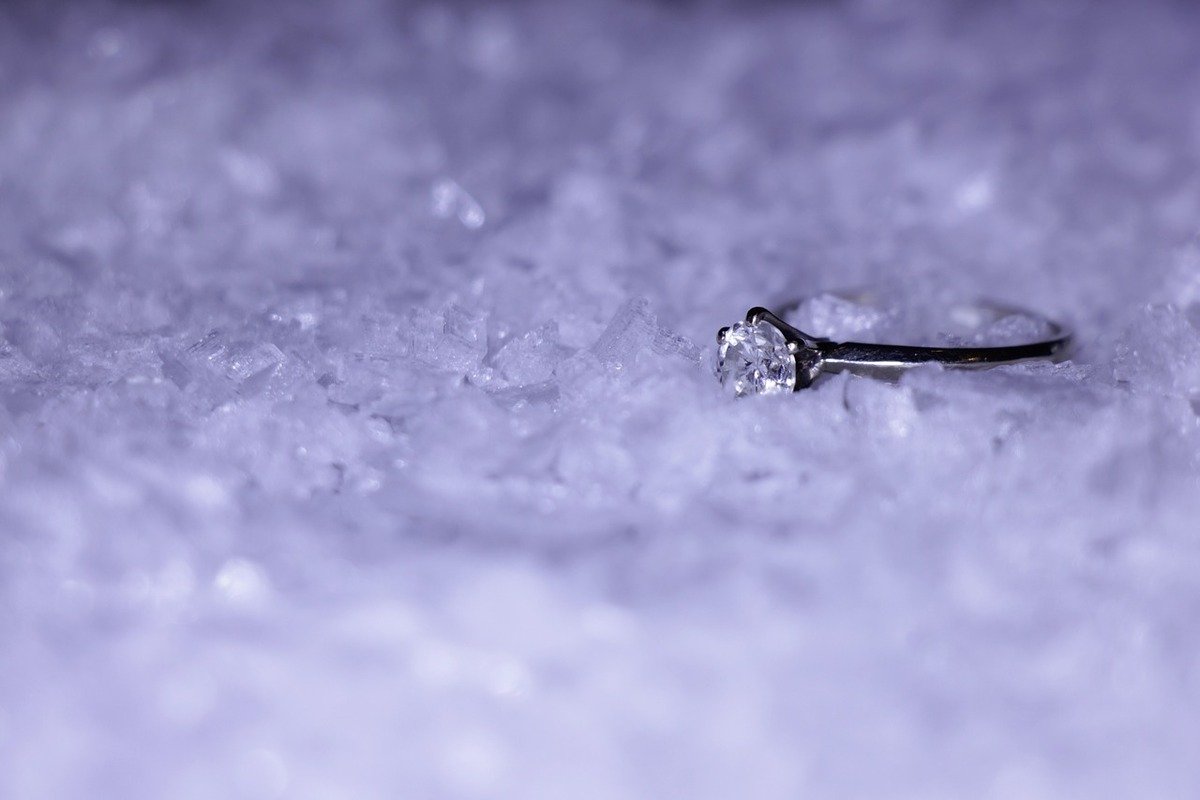
In the same way, if you have a high-quality diamond, one that is almost flawless, it might be a waste to not set it in white metal. It might be more modern than your average yellow gold ring, but the icy white color will make it a more striking engagement ring.
Find a trustworthy jeweler
When you want excellent advice on how to choose metal for engagement ring, you need to find yourself a jeweler that you can trust to do business with. They know the tricks of the trade, from the right setting to sets of diamond two grades higher, to the most durable metal for every purpose.
Like wedding bands, an engagement ring will experience the most wear and tear. Chances are, your partner will always wear it on a daily basis. Some do not even take it off when they already have a wedding ring because they may be made as a matching set. You need to tell your jeweler all of these little details, as these can help them gauge your needs.
Meaning Behind Colored Stones
What makes engagement rings special is that you can play with stones and metal combinations. By taking what you know about your partner’s preference and using your own creativity, you can create a unique one-of-a-kind piece.
Before diving into a color-matching game, make sure you also know the meaning behind colored stones. Some of the more favorite stones actually serve as a symbol for a specific trait or virtue.
Rose quartz
Rose quartz is gaining traction as a popular engagement ring stone of choice. This isn’t surprising considering how it is the symbol of love to begin with. If you want the epitome of love on her finger (and all the energy of love on her always), then this is a good choice.
Blue sapphire
Nothing says regal more than blue sapphire. The deep blue hue of the stone has made it the engagement ring of choice for the likes of Princess Diana. Apart from sharing tastes with royalty, sapphire also symbolizes honesty to one’s partner.
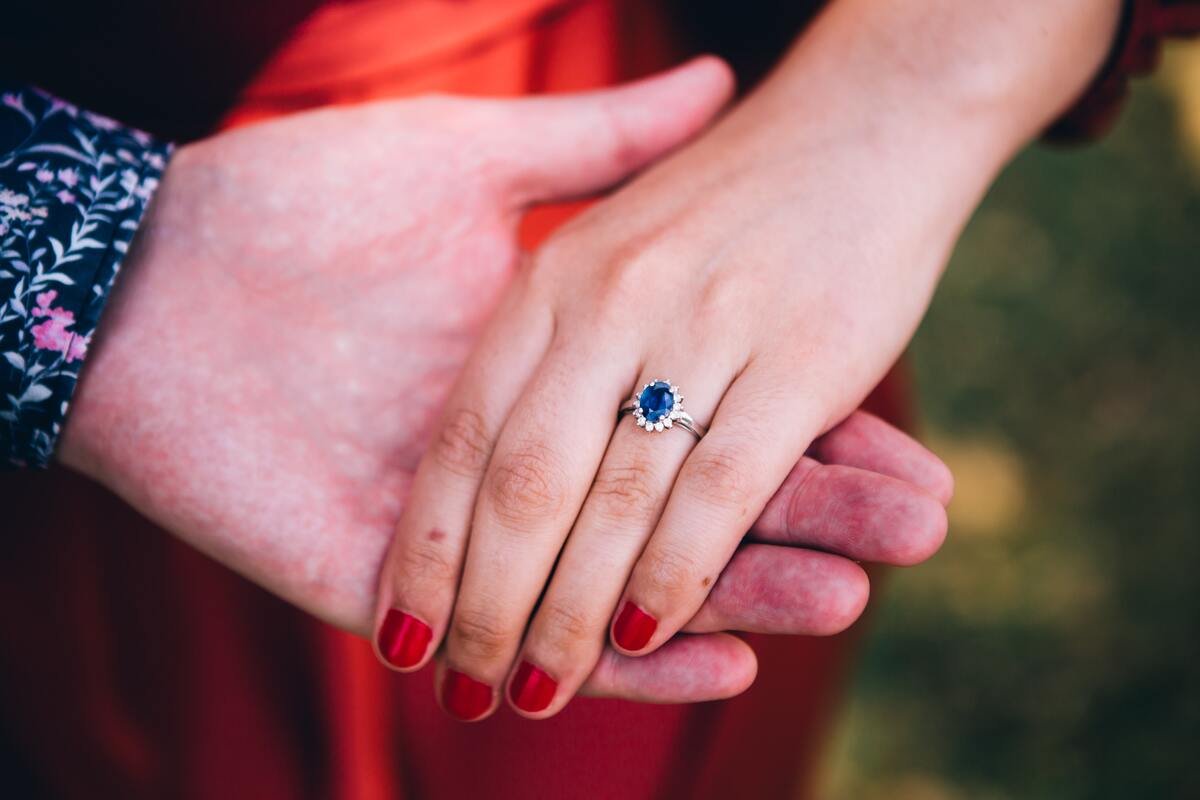
Ruby
Red may appear to be such a strong color for an engagement ring. However, if you and your partner share a passionate love, then a ruby may be a good symbol of your relationship. Its fiery red hue also has a striking aura that can look fierce regardless of size and setting.
Aquamarine
The light blue hue of the aquamarine gemstone is a good reminder of clear and constant communication. If you and your partner’s language of love is clear communication lines, then this may be a good symbol to mark your first step into a life together.
Moonstone
Looking for a unique way to say that your love will last your entire life? Get her a moonstone engagement ring. Moonstone is unique in appearance and choice, making it a memorable option.
Color-matching these stones with the right metal can depend both on taste and color complements. As a general rule, warm-colored stones will go well with yellow and rose gold. Cool-colored stones tend to shine brighter when they are set in silver and white metals.
There can be exceptions, and in some cases, preference can dictate the combination. So don’t be afraid to explore other color options as well.
Comparing Karats
If you do decide to go with the usual suspects of metals like gold, it’s good to ask about karats. Because you already know that pure karats do not equate to the best quality for wearable jewelry, it’s better to ask, “is 14k or 18k better for engagement ring?”
Here’s a comparison of the three most common karat count for gold. Each one has its pros and cons for engagement rings, but they may be the best karat choices for a memorable engagement ring.
Most Popular Diamond Clarity
Jewelry buyers are more likely to go for mid-tier diamonds in the VS2 and SI1 range when buying diamond rings.
18K: Expensive but valuable
If you want metal that is still close to the color of pure gold, then 18K is your best bet. 18K has a sweet division of 75% gold and 25% alloy. This gives it a more vivid yellow tone, which can be a style issue for some jewelry owners.
This may be the best choice if your partner has an allergy to nickel. Just prepare for easy scratches and frequent trips to your trusted jeweler for fixes. Since this is the purest that your gold can get while still maintaining durability, expect this metal to be the most expensive of the bunch.
14K: The Goldilocks of gold
This karat variant is just a little over half the gold content. It stands at 58.3% gold and 41.7% alloy in the division of metals. But even with just a few gold karats shaved off, there is a big change in terms of the hardness and durability of the metal.
Because it contains more alloys, a 14K ring will have a paler yellow gold appearance. Some women prefer this style because it has a daintier finish.
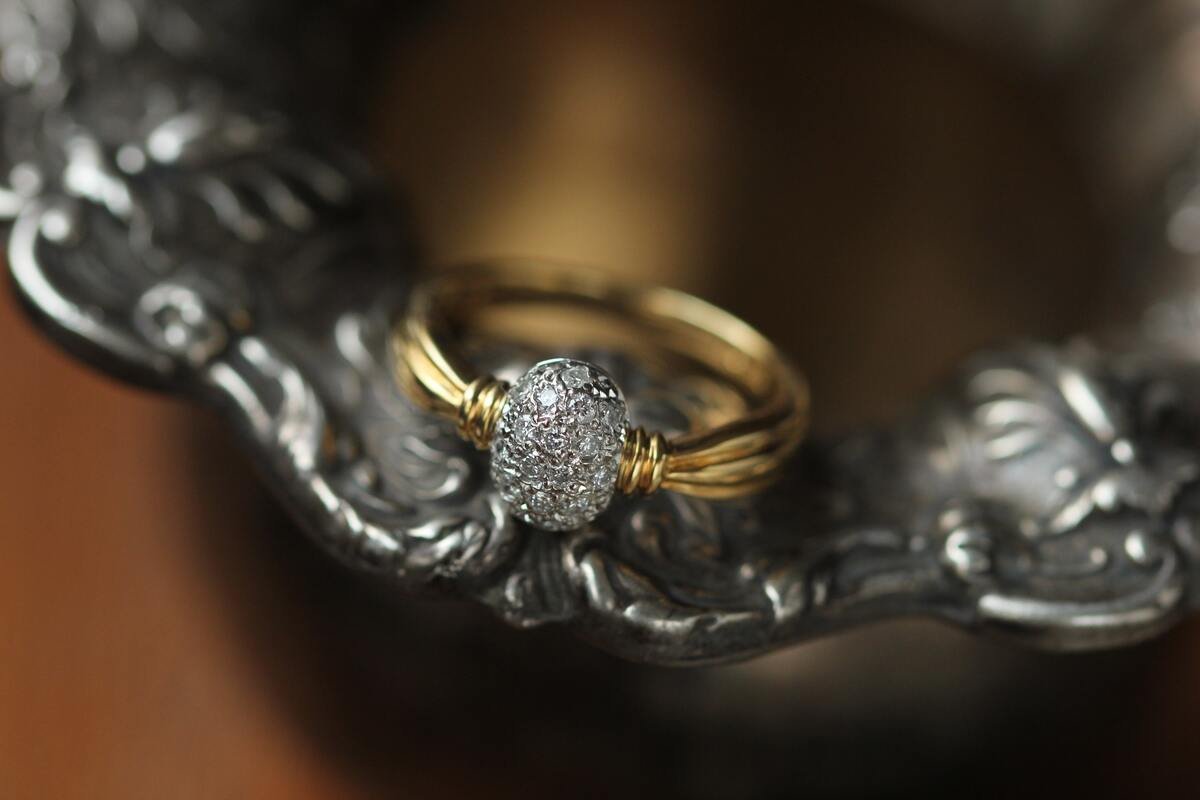
10K: Affordable, but beware of more metals
If you are looking for an affordable gold engagement ring, 10K usually falls at a good price point. It contains 41.7% gold and 58.3% alloy. This means that the color is even more of a paler gold, which can be good aesthetics-wise.
However, a word of caution for new buyers. 10K gold may save you some money, but it takes the price somewhere else. For instance, 10K gold will tarnish more easily. because of its other metal content. Some jewelers avoid using 10K if only to preserve the quality of the ring.
Beyond ring quality, this can also affect everyday use. With more metal content in this variant, those with allergies may be triggered with everyday wear. This karat variant is usually used for fashion jewelry that can be worn for specific outfits.
If you want to learn more about how to buy engagement rings, check out our guide, “How to Buy an Engagement Ring” to learn some expert tips and tricks.
